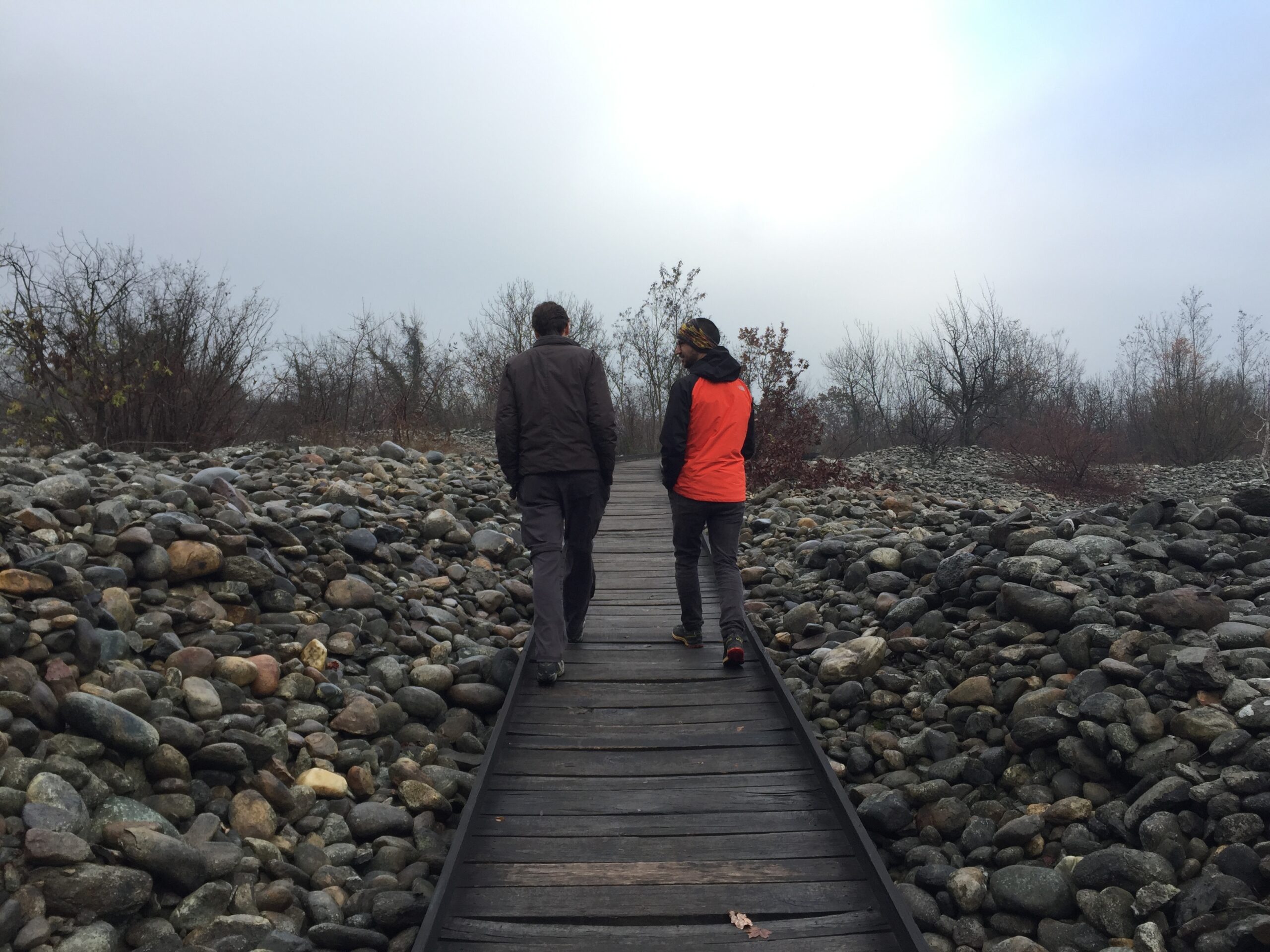
My research project “Sediment as Cultural Heritage,” responds to the STARTS4Water challenge Rebuilding relationships with fluvial systems: exploring people’s relationships with rivers and streams.
On my first outing, I met with Nicolò Polidori for a tour of the Riserva Speciale La Bessa, an ancient Roman gold mine dating to the 2nd century BCE. Nicolò provided an excellent introduction to the territory, its hydrology, geology, and soil chemistry. A vein of gold in the Aosta Valley was eroded and deposited by glaciers into the flatlands below Ivrea, along with the rest of a moraine. The Romans cut a series of canals they used to pan for gold, separating out larger rocks which they piled into the series of ridges between each canal, many over 10 meters high. From some of these they excavated out a small complex of shelters. This visit offered me an overview of the topography of the region and the relationship between the morphology of mounds, ridges, and basins sculpted by glacial movements and human operations.
While we may tend to understand anthropogenically modified waterways as a relatively recent phenomenon, it seemed significant to nuance this assumption by visiting a site that so clearly blurs the line between resource extraction and cultural heritage.
Photo by Annalisa Zegna

